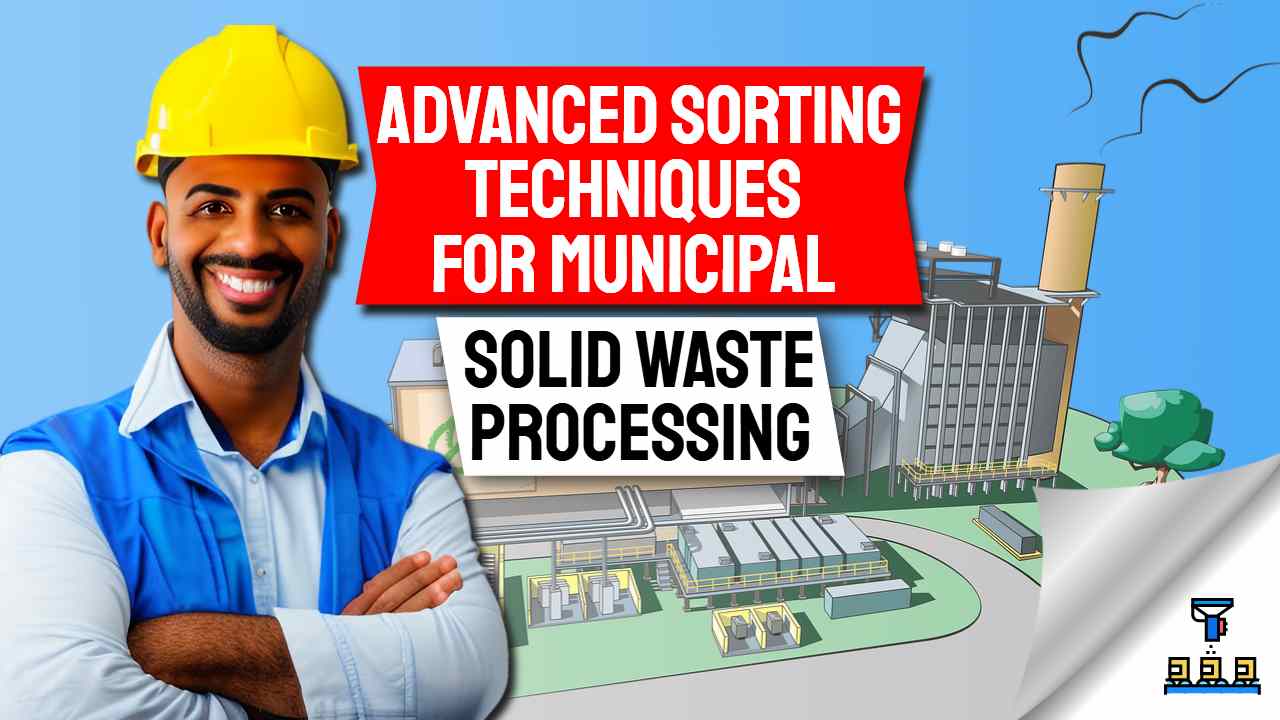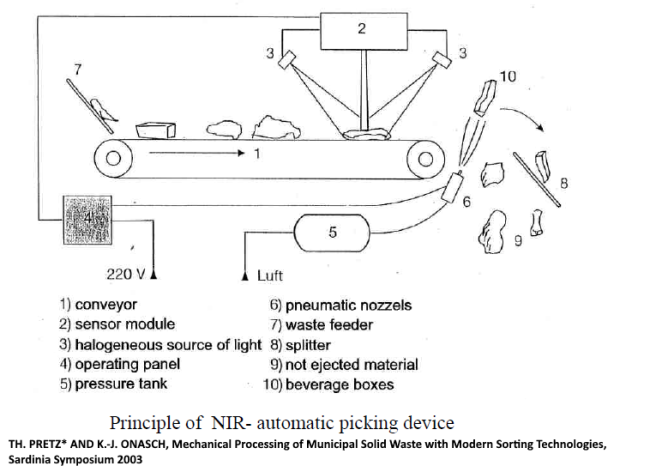Advanced Sorting Techniques for Municipal Solid Waste Processing
by CompostHarry
Posted on 15-01-2023 09:08 PM

Municipal solid waste (MSW) management is a crucial aspect of ensuring a clean, healthy and sustainable environment. One way in which municipal waste managers hope to improve recycling rates and lower the costs of running their Materials Recovery(Recycling) Facilities is by implementing advanced sorting techniques for municipal solid waste processing.
Comparison of manual sorting versus automated sorting systems
One of the key steps in the management of MSW is sorting, which separates recyclable materials from non-recyclable waste. Traditional sorting methods have relied heavily on manual labour, which can be time-consuming, costly, and prone to errors. However, with advancements in technology, advanced sorting techniques are now available for more efficient and effective MSW processing.
One of the main advantages of advanced sorting techniques is the increased automation of the process. Automated sorting systems use various technologies such as artificial intelligence, sensor-based sorting, and machine learning to sort waste quickly and accurately. These systems can sort materials at a much higher rate than manual labour, increasing the overall efficiency of MSW processing. Additionally, automated sorting systems can reduce labour costs and minimize the risk of human error.

Artificial intelligence, sensor-based sorting, and machine learning
Have been around for some years now in the industry. So what potential do these new technologies such as artificial intelligence, sensor-based sorting, and machine learning in waste sorting hold?
Artificial intelligence (AI) is one of the most promising technologies for waste sorting. AI-based systems can recognize and classify different types of waste materials with high accuracy, which can improve the quality of the sorting process. Sensor-based sorting systems use sensors to detect the properties of waste materials and sort them accordingly. This can lead to more precise sorting and less contamination of recyclable materials. Machine learning algorithms can also be used to continuously improve the sorting process over time by learning from the data collected during sorting.
Benefits for the environment from advanced sorting techniques
Advanced sorting techniques also have a number of benefits for the environment. By separating recyclable materials from non-recyclable waste, advanced sorting can increase the overall recycling rate and reduce the amount of waste sent to landfills.
This can lead to a reduction in greenhouse gas emissions and other environmental impacts of waste disposal. Additionally, recycling materials can conserve natural resources and reduce the need for virgin materials.
However, advanced sorting techniques also have some limitations. One of the main challenges is the high cost of implementing these systems, which can be a barrier for many municipalities. Additionally, advanced sorting systems require specialized knowledge and skilled personnel for operation and maintenance.
Furthermore, the systems can also reduce some levels of contamination in the sorted material, which can otherwise result in a lower quality of recycled products.
Despite the obvious cost limitations, advanced sorting techniques have been successfully implemented in many municipalities around the world.
Examples of implementation of advanced sorting techniques
For example, in Singapore, a sensor-based sorting system has been installed at the Tuas South Incineration Plant, which can sort waste with an accuracy rate of up to 96%.
In the Netherlands, an advanced sorting system that uses AI and machine learning algorithms has been installed at the HVC waste processing facility, which has significantly increased the recycling rate of materials.
These are only 2 examples of many, but they demonstrate the potential of advanced sorting techniques to improve MSW processing.
Has particle size reduction outlived its usefulness?
Particle size reduction is a common process used in advanced sorting systems to prepare waste for further processing. Historically, particle size reduction has been used to allow the pelletization of Refuse Derived Fuel (RDF) and Solid Recovered Fuel (SRF) for energy extraction during incineration.
However, over the last 15 years, the development of the anaerobic digestion process has provided a more environmentally friendly option for the utilization of organic waste.
Negative consequences of particle size reduction
While particle size reduction may seem like an efficient way to process waste, it has a number of negative consequences.
First and foremost while the advanced AI techniques used in the most recent advanced sorting techniques work well on the whole and almost complete waste items, they would never be able to separate the tiny microplastic pieces one by one into individual resin batches for reuse of resin.
There is a fundamental mismatch between advanced sorting techniques and particle size reduction processes such as milling, shredding and crushing.
Another of the main problems is the creation of microplastics. Microplastics are small plastic particles that are smaller than 5mm in size and are created when larger plastic items are broken down. These tiny particles can have devastating effects on marine life, and they are also being consumed by humans, which may lead to health problems in the long run.
Another issue with particle size reduction is the potential for creating dust, which can be harmful to human health. Dust particles can be inhaled and can cause respiratory problems. Additionally, particle size reduction can also increase the risk of fire, as the process generates heat and can cause spontaneous combustion.
Particle size reduction is becoming a controversial practice
Given the potential negative impacts of particle size reduction on the environment and human health, it is becoming an increasingly controversial practice.
Alternative methods for waste processing, such as anaerobic digestion, have been developed and implemented to reduce the need for particle size reduction. Additionally, research is being conducted to find ways to reduce the negative effects of particle size reduction, such as developing methods to capture and recycle microplastics.
Concluding our Article on Advanced Sorting Techniques of Municipal Solid Waste during processing
In conclusion, advanced sorting techniques can significantly improve the efficiency and effectiveness of MSW processing.
These techniques use technologies such as AI, sensor-based sorting, and machine learning to sort waste quickly and accurately. They can also reduce labour costs and minimize the risk of human error.
Additionally, advanced sorting techniques can increase recycling rates, reduce environmental impacts, and conserve natural resources.
However, they come with some limitations such as high costs and the need for specialized knowledge and skilled personnel.
While particle size reduction may have been a necessary step in the past to prepare waste for further processing, it is now becoming increasingly controversial due to the negative impacts it can have on the environment and human health.
With the development of new technologies and alternative waste processing methods, there is a growing need to find ways to reduce the need for particle size reduction and minimize its negative effects.
Nevertheless, as technology continues to evolve, the future of waste sorting is very likely to bring new solutions and advancements, making the process even more efficient and sustainable.




